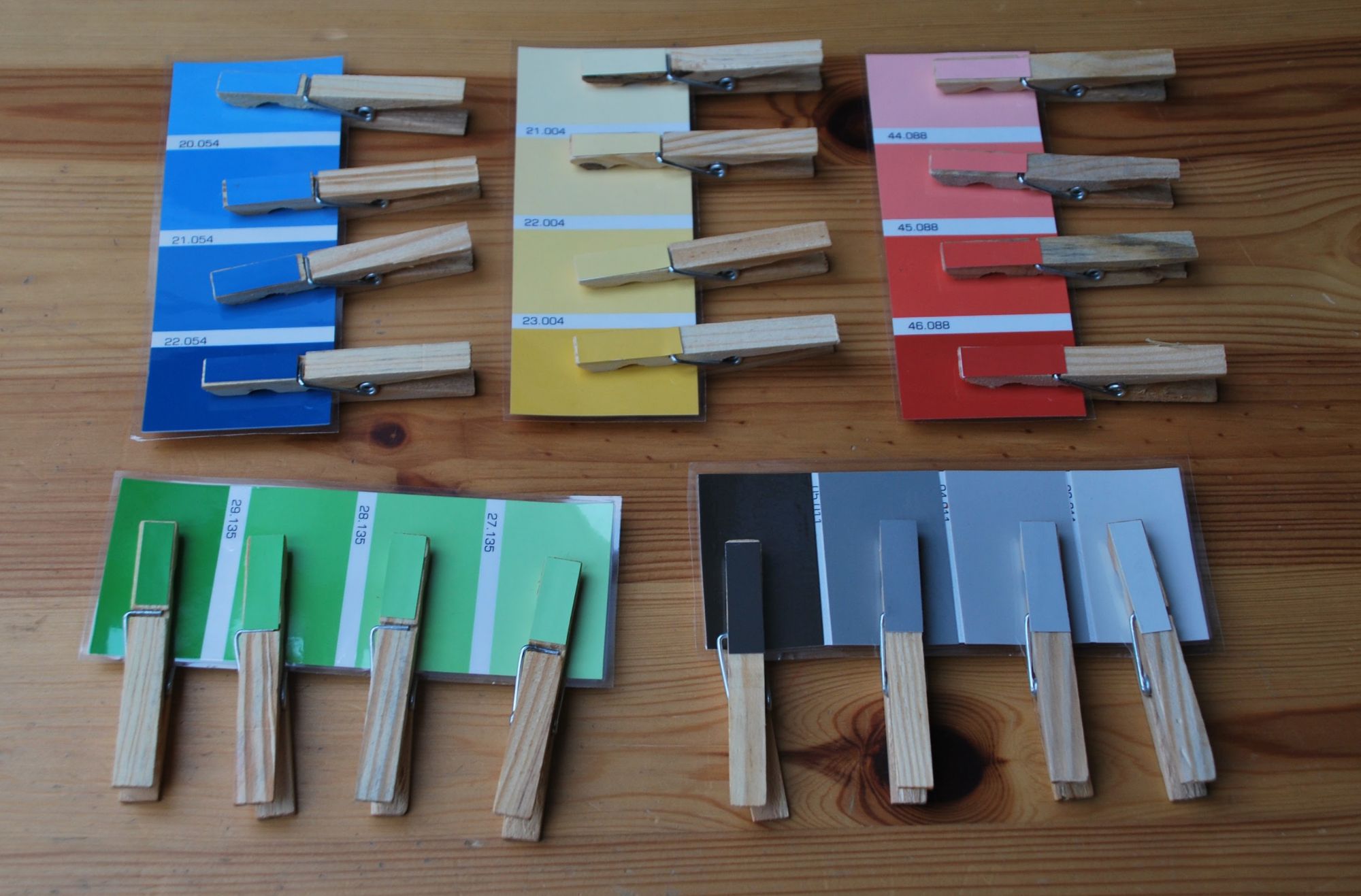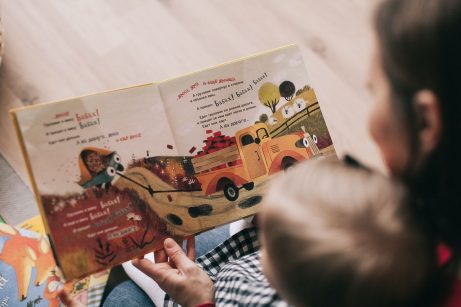Montessori on a Budget

Although there are many expensive Montessori materials and schools, there is nothing inherently expensive about the method. Both Montessori education and parenting can, are, and should be practiced even on the most limited budgets.
What is Montessori really about?
When we say Montessori, many people (those who have some experience of it, at least) first imagine the stereotypical Casa classroom: large, airy rooms filled with custom-built furniture and beautiful wooden materials. The highest quality classroom equipment doesn’t come cheap – the didactic materials are designed and made with care and precision, and (partly because of the Montessori emphasis on separating concepts and isolating difficulty) there is quite a lot of them.
I am here to let you on a secret, though: you can practice Montessori very well on a shoestring budget. All of those beautiful materials, lovely and useful as they may be, are not the most essential part of our method; in truth, there is no one single item or material that we couldn’t do without. I can only guess how Dr. Montessori herself would have reacted to the now-widespread notion that Montessori education is only for wealthy and privileged families – likely with some amusement, and even more disdain. After all, Montessori education started with a small school in one of Rome’s poorest districts and is just as happily practiced now in Mumbai slums as in London private schools.
The foundations of Montessori parenting and education lie not in our equipment, but in how we approach and treat the child. Some of the easiest paths towards the required understanding lie in credentialed training, but in our age of information, there is a wealth of available sources online and in print for anyone committed enough to study it, including our own web-based classes; and of course, you should always study straight from the source. We must focus on changing the way we raise our children – the way we see them, speak to them, cooperate with them. The cost is high, but not in money – it is the transformation of ourselves.

Explore the fundamentals of Montessori parenting with this free video by Sylvia Arotin, offering insights and strategies to empower and educate your child.
Alright, but eventually don’t we need things?
Of course, the first step of actually working with a child is preparing the environment, and getting some things is inevitable. But once you understand the purpose and mechanisms of the Montessori environment, it becomes quite easy to pick out inexpensive alternatives to most anything in it.
The didactic materials that expensive private schools purchase are gorgeous and durable, made of wood and metal, and serve child after child for years. However, if you are running a small program or just looking for materials for your child, it is surprisingly easy and practical to replace them with hand-made and repurposed objects. Paper boxes and trays (think reused shoeboxes or food containers), cloth or woven baskets, alphabets cut out of felt or foam – none would last a decade of heavy use in the classroom, but do you really need them to? Remember that the sandpaper letters are so called because that’s what they literally were – Dr. Montessori and her assistants cut them out of sandpaper and glued them onto some discarded wood. The first movable alphabet was stored in a shoe box, with the individual compartments created with strings and glue – Dr. Montessori lauded the ingenuity of her assistant who created it.
But what of beauty?
Indeed, beauty and order are important parts of the environment and Dr. Montessori often appealed to us to remember them; the child is to learn that the educational materials are precious and special, and their attractiveness forms a large part of this impression. However, this does not necessarily translate into cost. Consider painting that shoebox or covering it with contact paper; use a pretty scarf for a tablecloth on a dinged table, cover a damaged chair with a throw cushion. In fact, carefully repairing a damaged item, making up for its defects with decoration and treating it with extra care because we can’t afford to replace it, sends the child a much clearer message of its importance than any expense could.
Furthermore, the beauty of the environment is just as much about what isn’t there as about what it is: unnecessary clutter is always worse than few well-chosen, economical items. Instead of worrying about things you cannot change in your space – such as old carpeting or worn furniture – sit down at the child’s height and look at the room with their eyes. Consider the layout, its practicality, how furniture is placed. Can you showcase a material better by placing it in another spot, or make the place more harmonious by organizing things into a box or basket? Is everything accessible and practical to the child? Are there decorations like plants, pictures or wall-hangings?
Nature
If you at all can, utilize the outdoors as an educational environment, too. Public spaces, parks, forest, walks and excursions can provide your children with much more than you could ever buy and bring into the home. If you have a natural space where you live, such as a forest or nature reserve, you should also collect and bring in “educational equipment” like seeds, plants, bird feathers, rocks and twigs: don’t underestimate the potential – and beauty – of these completely free objects.
Focus on Practical Life
The Practical Life area is the core of a Montessori classroom, the backbone out of which all the rest of the curriculum grows. By its very nature it is based in the child’s native environment rather than in expensive bought objects. What you need is simply to look at your home or school and consider how the child can be involved and invited to participate in it. You will need very little: a mirror in which the child can see themselves to brush their hair and wash their face, a pillow on which a toddler can sit when they change their shoes themselves, a sweeper small enough for the three-year-old’s hand so that they can clean up after themselves, and so on. Most of the equipment are household objects you already have and use, only modified for the child’s size and comfort: a mop with the handle cut to half, or a bucket small enough to carry even when full of water.
Cheap home goods suppliers (discount shops, thrift stores and flea markets) are in fact invaluable sources, both for practical life equipment and for repurposed items. For example, ice cube trays make great sorting trays, many serving dishes can serve as beautiful and practical “baskets”, colanders and shakers are great for small children’s posting activities, cream pitchers and shot glasses make fabulous drinkware for toddlers. You can create any number of activities out of pool noodles, duct tape and popsicle sticks if they are available where you live.
Utilize your community resources
Don’t forget that your child doesn’t need to own things in order to learn and benefit from them. Lending libraries are a priceless resource that should be a big part of any child’s life. Similarly, some communities also organize toy libraries, handmade toy swaps and co-ops – if yours doesn’t, you might consider starting it yourself. Remember that most Montessori materials serve a child’s need for a few months to years – once they grow out of any particular item, it should assist another child before being discarded.
Likewise, you can and should utilize the resources and skills of your community. If you sew, knit or crochet, do woodwork or painting, there is a world of options opening up to you of things you can make yourself – but don’t hesitate to also ask others among your family and friends who can do those things. Chances are they will be happy to help you make things. And in this age, there is also an invaluable community online – with a myriad of suggestions, tutorials, ideas, inspirations and how-to’s for more materials than your child could ever need. For example, the colour matching activity in this post’s header picture was created cheaply out of household clothing and free paint swatches. There is ever so many more ideas like it.
Have I forgotten a particular resource or way to help your Montessori environment on a budget? Please feel free to share it in the comments below.
Montessori Beginnings
YOUR ULTIMATE
MONTESSORI PARENTING COURSE
FOR ZERO TO THREE
Gain clarity and confidence in your parenting to raise a resilient, independent and joyful child.


